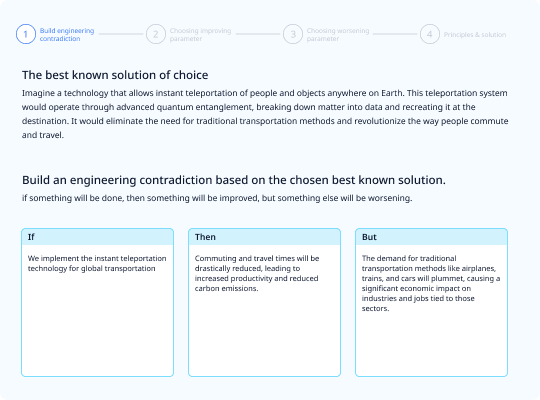creative tool

The 40 Inventive Principles is a basic TRIZ tool that assists in problem-solving, generating new ideas, and creating innovative solutions. Genrich Altshuller developed the technique’s fundamentals by analyzing, classifying, and systematizing tens of thousands of patents.
40 Inventive Principles is a creative thinking tool that helps us to free from psychological inertia and makes us think “out-of-the-box”. 40P redirects the problem-solving process from guessing and intuitive decisions to creative analysis and innovative solutions generation. Here, we want to summarize how you and your team can benefit from the 40P tool:
The 40 Inventive Principles thinking tool is useful in various cases of parameter improvement. Some highlighted cases include:
From here, you can further explore and discover many other situations where the 40P thinking can be useful.